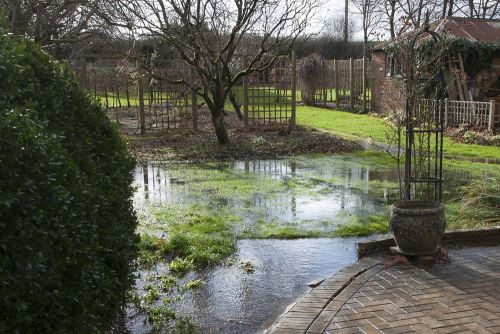
Sunday 26th January 2014 - Flood 2014
2014 will go down in the village records as the year of yet another flood. Chitterne village sits above an underground lake of water held by an impervious layer of rock deep beneath the chalk. Periodically, after prolonged spells of rain, the water table rises higher than usual and the underground water is forced to the surface through springs which open up in the village wherever thay can find a weak spot.
The water level in the Cut rose from dry to three-quarters full on the night of the 28th/29th December, so we should have been warned, but we were astounded by the speed of the inundation.

Here at the Round House the garden was awash by 5th January and water was pouring out towards the road. Two days later we found the first puddle in the hall coming from a spring in the floor near the front door. The puddle expanded and we brought the dehumidifier and wet vac out of storage. Next day we found more water in the kitchen from another spring under the kitchen/hall wall and the day after that the end room carpet was soaked at one end. We moved furniture and equipment to the dry end of the room and carried on. Each morning we vacuumed up the water in the hall and kept it down during the day by vacuuming every hour or so.
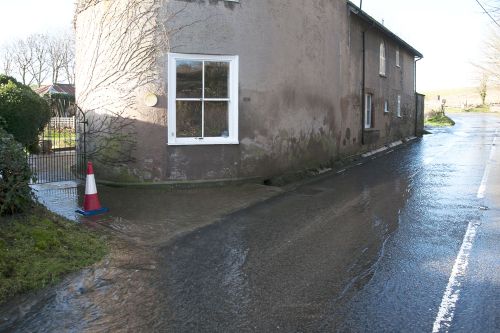
This is the fourth time since 1976 that we have experienced spring water inside the house and compared to others we came off very lightly. The end room is the newest part of the house, and, when it was built in 1986 as a bedsit room for my mother, we hadn't realised how necessary the land drains are that run beneath the older concrete floors. They drain excess water into the gulley between the house and the road. Consequently after 1986 the first time the springs erupted, between the skirting boards and the floor, the room was flooded to a depth of several centimetres. We have not solved the problem of the end room floor yet. If only we had known to install land drains beneath the concrete.
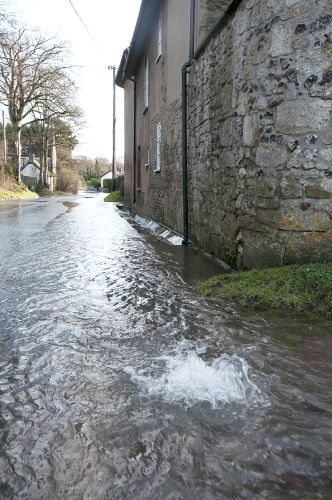
The french drain we had installed in 1994 around the round end of the house has worked very well. It collects water heading towards the house from the garden and redirects it around the outside of the walls to the roadside gulley. Inside the round end, the sitting room has a suspended floor supported on beams resting on slates and bricks. Spring water under this floor outflows into the gulley through vents on the roadside. This all worked fine until the storm drains at the bottom of Glebe Farm lane became blocked and the surface water on the road overflowed into the gulley. Luckily the water level in the gulley didn't quite reach the vents.
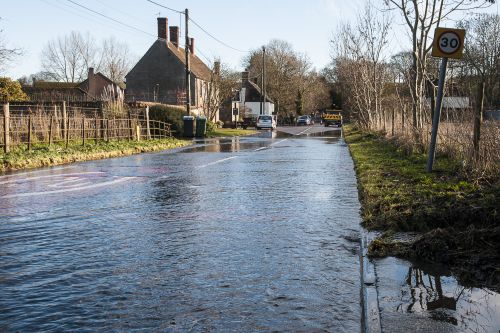
At this point, before the road was closed, the traffic was still passing the house at the same speed as usual throwing great waves of water up over the roadside windows with a loud slap, fit to almost break the window panes.
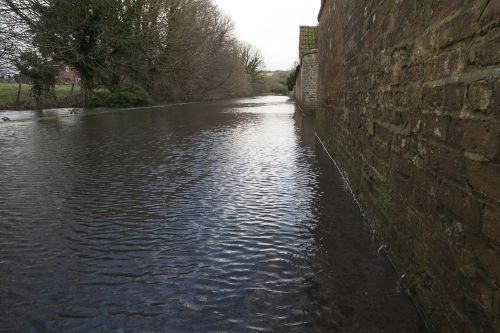
Compared to other neighbours we suffered little. On the Tilshead Road the water from the Cut merged with the water on the road. In the archives we have similar pictures of floods in previous years. Notably 1910, 1915 and 1925 before the Cut was deepened and lined in the 1940s, and the 1970s before the Pumping Station opened in 1988. Since then in 1995, 1998 and 1999 we had problems here, but at least no village dwellings have been washed away as two were in the Great Flood of 1841.
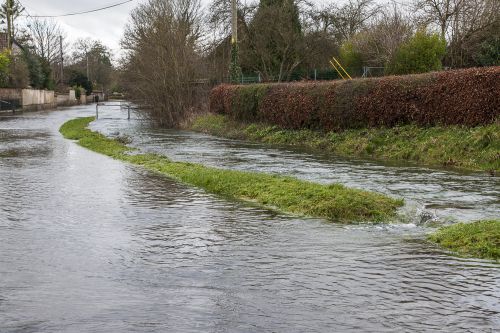
Friday 3rd January 2014 - Ernie's Book

Ernie George's memoirs are available to read on kindle and can be bought from Amazon. The book is called "A Second World War Soldier - Before, During and After" by Ernest F George and I thank HG for bringing this to my attention and sending me the link. The book is well written and entertaining and gives valuable insight into life in Chitterne before and after the second world war as well as insight into the lot of a soldier during that conflict.